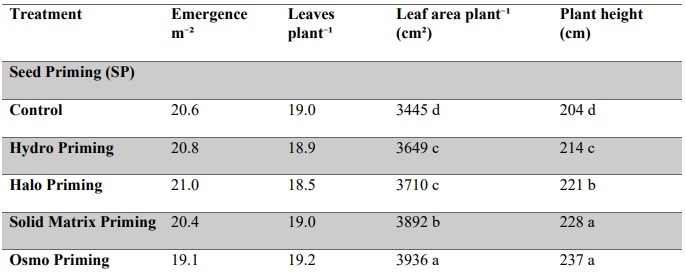GROWTH AND DRY MATTER PARTITIONING IN MAIZE AS AFFECTED BY SEED PRIMING TECHNIQUES AND FORMS OF POULTRY MANURE AT DIFFERENT PHENOLOGICAL STAGES
DOI:
https://doi.org/10.71146/kjmr528Keywords:
phenology, osmo-priming, nutrient management, organic amendments, biomass accumulationAbstract
A two year research was conducted at the Agronomy Research Farm, University of Agriculture Peshawar to assess the potential of seed priming and poultry manure in enhancing maize growth, development, and yield. The aim was to identify effective, low-cost strategies for improving crop performance under field conditions. The study was laid out in a randomized complete block design with three replications and two factors: seed priming (control, hydro-, halo-, solid matrix, and osmo-priming) and poultry manure forms (control, fresh, open heap, and ditch decomposed). It was revealed that days to tasseling, silking, and maturity were significantly influenced by seed priming, poultry manure, and year, with later development observed in 2022. Osmo-priming led to earlier tasseling, silking, and maturity, while decomposed poultry manure treatments tended to delay phenological stages. The greatest leaf area (3936 cm²) and tallest plants (237 cm) were recorded under osmo-priming, while ditch-decomposed poultry manure also contributed positively to these parameters. In contrast, emergence m⁻² and the number of leaves per plant were not significantly affected by treatments or year. Dry matter accumulation at both silking and physiological maturity stages was significantly enhanced by seed priming and poultry manure. The highest dry matter production at silking (99.4 g plant⁻¹) and maturity (217 g plant⁻¹) was achieved with osmo-priming, while ditch-decomposed manure yielded the highest biomass among organic amendments. Crop growth rate during both emergence to tasseling and tasseling to maturity was greatly affected by seed priming, manure forms, and year. Osmo-priming and ditch-decomposed manure consistently produced the highest CGR values. It was settled that osmo-priming combined with ditch-decomposed poultry manure significantly enhanced maize growth, dry matter accumulation, and crop growth rate. This low-cost strategy is recommended for improving maize productivity under field conditions.
Downloads

Downloads
Published
Issue
Section
License
Copyright (c) 2025 Rashid Jalal, Shahen Shah, Muhammad Arif (Author)

This work is licensed under a Creative Commons Attribution 4.0 International License.






